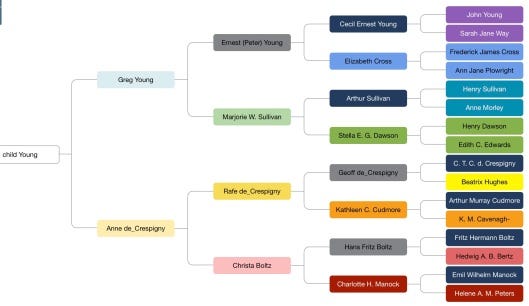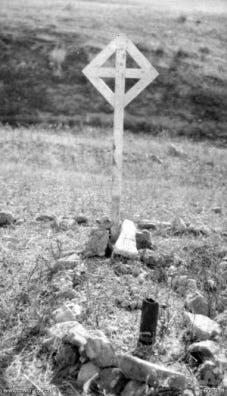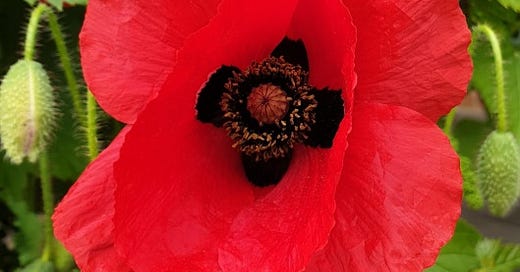Remembrance Day 2024
106 years after the armistice was signed on 11 November 1918 we remember those who fought and those who died in the war
Many of the posts in my blog recall men of my family who fought in wars.
My family, like so many others, felt the effects of World Wars 1 and 2.
When in 1914 what came to be called the Great War broke out, men of our families, mine and my husband Greg’s, enlisted and fought for their country. This happened again in the war that followed the war to end all wars.
Taken together their determination to serve had a measurable affect on the shape of the conflict and its outcome, of course, but in each case their personal decision also had deep private consequences for their friends and family. Mothers and fathers, brothers and sisters, children, girlfriends, mates, and acquaintances all became willing or unwilling partners in a man’s choice to join up, and one way or another they all suffered for it.
At the very least the father, son, husband, brother, or friend was taken from their lives for a long time, and it very soon became clear that the person finally returned to them, if he returned, might now be a sad maimed and crippled shell of the young man who had gone away.
Both Greg’s grandfathers fought in WWI. Both were wounded and returned to ordinary life more or less incapacitated, a burden to themselves and their families. Greg’s paternal grandfather Cecil lost a brother, a half-brother, and a cousin. His maternal grandfather Arthur Sullivan came back wounded and ‘shell-shocked’, to use the euphemism of the day.
Greg’s father signed on in WW2 and was sent to New Guinea. He didn’t like to talk about it.
All four of my great grandfathers fought in WWI. All were wounded or became ill. Both my grandfathers fought in WW2.

Our forebears lost brothers and cousins in the wars. Most of these uncles and cousins did not have children and so it is up to us, the descendants of their siblings and cousins, to remember them.

Of course I have never met most of the men I have written about, and I cannot comprehend the appalling experience of fighting in a war. I hope I have done something to keep their memory alive by gathering together the dry facts of their military experience.
This is a list of the posts about the men who served in World War 1.
Cecil Young and family: Cecil’s early life up to end World War I - my husband's paternal grandfather
O is for Oakleigh - my husband's maternal grandfather Arthur Sullivan suffered shell shock after the war
U is for Unibic biscuit tin - my great grandfather Constantine Trent Champion de Crespigny served in the hospital at Rouen - a photograph of him at the time ended up on a biscuit tin one hundred years later
A is for letter from Anzac - letter by Keith Murdoch mentioned my great grandfather Trent de Crespigny
Trove Tuesday: canaries - my 3rd great aunt Viola de Crespigny donated some canaries to help raise funds for the war
German flag from Fast Hotel Jerusalem - a souvenir from World War 1 donated to the Australian War Memorial by my great great uncle Wentworth Cavenagh-Mainwaring
Trove Tuesday: Leslie Leister died at Fromelles 19/20 July 2016
The patients of No. 1 A.G.H. France during World War 1 - my great grandfather Trent de Crespigny served at Rouen in the hospital
M is for muddle - there were quite a few de Crespigny relatives who served in the war including Henry Champion de Crespigny (1882 – 1946) was my great grandfather’s fourth cousin once removed.
Z is for Zillebeke - remembering Stanley Gilbert Edwards (1889 – 1917) my husband’s great grand uncle
Y is for Ypres - remembering my husband's 1st cousin twice removed William Alfred Fish (1890 – 1917)
V is for Vizefeldwebel - remembering my great grandfather Fritz Hermann Boltz
James Ernest Young (1878 – 1942) enlisted in the war and was gassed
U is for unwilling or hesitating to obey an order - Henry Sullivan, my husband's great uncle was disciplined for refusing to obey a order during the war
S is for St Eloi - remembering Milo Massey Cudmore (1888 – 1916), the cousin of my great grandfather
R is for No. 1 Australian General Hospital at Rouen - another post about the hospital at Rouen
Q is for Querrieu - remembering John Percy Young, my husband's great uncle
P is for Poperinghe New Military Cemetery - Selwyn Goldstein (1873 – 1917) was the first cousin of my great grandmother
O is for orders - William James Harris (1898-1917) is the great uncle of my sister-in-law
K is for Kanatte General Cemetery in Colombo - Vyvyan Westbury Hughes (1888-1916) was my great grand uncle
L is for Lagnicourt - William Stanley Plowright (1893-1917) was the cousin of my husband’s grandmother
F is for fundraising - my great grandmother Kathleen Mary Cudmore née Cavenagh-Mainwaring (1874-1951)
G is for Gallipoli - Walter Fish (1878-1915) brother-in-law of two of my husband’s great aunts
H is for Hindenburg Line - George Murray Cross (1890 – 1962) was one of my husband’s paternal great uncles
A is for aviator: Ernest Osmond Cudmore - Ernest Osmond Cudmore (1894 – 1924) was my 1st cousin 3 times removed
B is for Buick continuing the story of Ernest Osmond Cudmore
C is for Compiègne on 1 September 1914 - Claude Norman Champion de Crespigny (1888-1914) my 5th cousin; twice removed
X is for the Military Cross won by my step grandfather George Symes
V is for Villers-Bretonneux - remembering William Stanley Plowright (1893-1917), my husband’s first cousin twice removed
N is for Naval husbands - a number of my great grandmother's brothers-in-law served in the navy in World War 1
K is for King and Country and F is for Fromelles are about Leslie Leister (1894-1916), the half-brother of my husband's grandfather, one of the soldiers who were killed at the battle of Fromelles in July 1916
Sepia Saturday: First World War faces – Wentworth Rowland Cavenagh-Mainwaring at Gallipoli - my great great uncle
Hugh Vivian Champion de Crespigny (1897 – 1969) - one of my great great uncles
No 3 AGH (Australian General Hospital) Lemnos Christmas Day - before Rouen my great grandfather Trent de Crespigny served in the hospital at Lemnos near Gallipoli
John Percival Young (1896 – 1918) my husband's great great uncle died two days before the war ended as a result of being gassed
Johnna Bell comrade of the late William Stanley Plowright was remembered by his friend's family
Frederick Beswick Cross (1893 – 1959) World War I service another great uncle who served in the war
Arthur Murray Cudmore World War I service another of my great grandfathers who served in the war
Philip Champion de Crespigny (1879 – 1918) - my great grand uncle was killed in action

The Australian Ex-Prisoners of War Memorial in Ballarat lists more than 36,000 Australian men and women who were forcibly interned by enemy forces in wars, from the Boer war to World War 2
A memorial to Australian prisoners of war: The following men were prisoners of war during World War 1 and are listed on the Australian Ex-Prisoners of War Memorial in Ballarat:
Frederick Cudmore Andrews (1895 – 1975), my first cousin twice removed, one of my grandmother’s first cousins
Ernest Osmond Cudmore (1894 – 1924), my first cousin three times removed
Kay Chauncy Masterman (1896 – 1981), my fourth cousin three times removed


